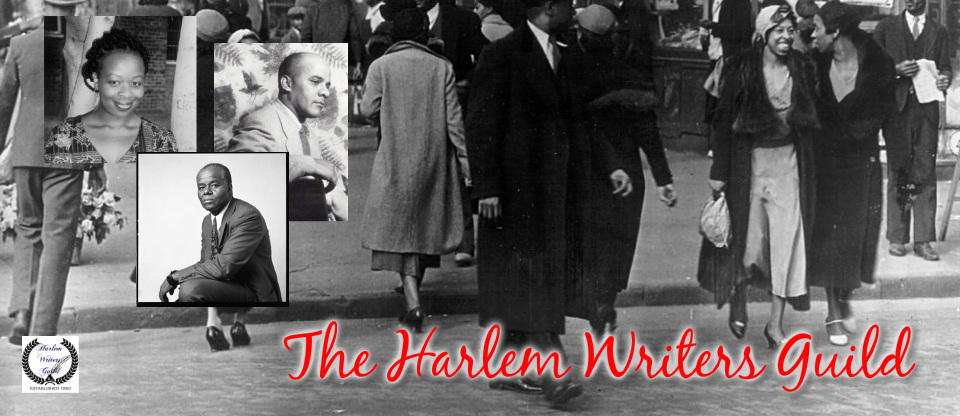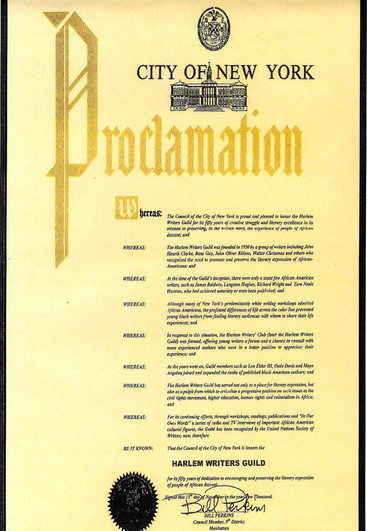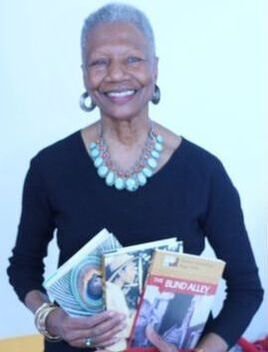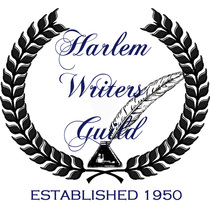|
|
|
To create and publish compelling literature of all genres reflective of the African American and African Diaspora experiences of struggle, survival and success, using our art as expressions of protest again racism, social injustice and economic tyranny while embracing, promoting and sustaining black voices, young and old.
The Harlem Writers Guild is dedicated to presenting the experiences of people of the African Diaspora through the written word. 501 (c) (3) Nonprofit. |
Initiative
About The Harlem Writers Guild (HWG)
In 1950, Ralph Ellison and Richard Wright were the only two best-selling black fiction writers of the day and major publishing houses were not welcoming to black talent. However, a group of black writers based in Harlem came together and decided that together they would create literary works reflective of their lives and level the playing field of publishing.
Our first meeting was in a small storefront office one flight above the corner of 125th Street and Lenox Avenue. Dr. John Henrik Clarke recounted our first meeting to our past Executive Director of the Harlem Writers Guild, William Banks, Jr., before he died in 1998. Dr. Clarke said he couldn’t remember if anything had been read but the group decided that in fact there would be a group that would continue to meet and critique each member’s work. It was also agreed that there would be vigorous discussions on the state of black affairs.
Our first meeting was in a small storefront office one flight above the corner of 125th Street and Lenox Avenue. Dr. John Henrik Clarke recounted our first meeting to our past Executive Director of the Harlem Writers Guild, William Banks, Jr., before he died in 1998. Dr. Clarke said he couldn’t remember if anything had been read but the group decided that in fact there would be a group that would continue to meet and critique each member’s work. It was also agreed that there would be vigorous discussions on the state of black affairs.
In 1977, the HWG was honored by the United Nations (UN) Society of Writers. In 1986, John O. Killens estimated that members of the Harlem Writers Guild had produced over 300 published works of fiction, non-fiction, poetry, plays, and screen plays. Several have received literary acclaim. Past and present members include: Dr. John Henrik Clarke, Grace F. Edwards, Rosa Guy, John Oliver Killens, Walter Dean Myers, Louise Meriwether, Dr. Olubansile Abbas Mimiko and Sarah E. Wright, Audrey Lorde, Paule Marshall, Julian Mayfield, Terry McMillan, Robert McNatt, Lofton Mitchell, Wilbert Oliver, Funmi Osoba, Sidney Poitier, Charles Russell, K. C. Washington, Minnette Coleman, Gammy Singer, Wilbert Tatum, Brenda Wilkinson, Valerie Wilson-Wesley, Sarah Elizabeth Wright, Sandra L. West, Doris Jean Austin, William H. Banks Jr., Wesley Brown, Rosemary Bray, Irving Burgie, Judy C. Andrews, Godfrey Cambridge, Andrea Broadwater, Alice Childress, Ossie Davis, Ruby Dee, James DeJongh, Lonnie Elder III, Donis Ford, Bill William Forde, Lorraine Hansberry, Bob Desverney, Dr. Beryl Dorsett, Sheila Doyle, Lloyd Hairston, Robert Hooks, Rose James, Alfonso Nicks, and Betty Ann Jackson.
In 2000, HWG announced a partnership with the digital publisher iUniverse to create its own imprint, Harlem Writers Guild Press. The anthology Beloved Harlem Random House 2005, edited by William H. Banks Jr., former Executive Director of HWG, featured work by HWG members including Dr. John Henrik Clarke, Grace F. Edwards, Rosa Guy, John Oliver Killens, Walter Dean Myers, Louise Meriwether, Funmi Osoba, Diane Richards, Dr. Olubansile Abbas Mimiko and Sarah E. Wright. The Harlem Writers Guild most recently has added to its roster the following writers: Angela Dews, Cordenia Paige, Eartha Watts-Hicks, Sylvia White, and Miriam Kelly Ferguson.
So here we are today, decades later, carrying the legacy torch and going strong as a group of African American fiction writers committed to literary excellence in the traditions of Dr. John Henrik Clarke, John Oliver Killens, Rosa Guy, Dr. Maya Angelou, Sarah Wright, Grace Edwards, Ossie Davis, Ruby Dee, Lorraine Hansberry and many other stellar African American authors, playwrights and poets.
In 2000, HWG announced a partnership with the digital publisher iUniverse to create its own imprint, Harlem Writers Guild Press. The anthology Beloved Harlem Random House 2005, edited by William H. Banks Jr., former Executive Director of HWG, featured work by HWG members including Dr. John Henrik Clarke, Grace F. Edwards, Rosa Guy, John Oliver Killens, Walter Dean Myers, Louise Meriwether, Funmi Osoba, Diane Richards, Dr. Olubansile Abbas Mimiko and Sarah E. Wright. The Harlem Writers Guild most recently has added to its roster the following writers: Angela Dews, Cordenia Paige, Eartha Watts-Hicks, Sylvia White, and Miriam Kelly Ferguson.
So here we are today, decades later, carrying the legacy torch and going strong as a group of African American fiction writers committed to literary excellence in the traditions of Dr. John Henrik Clarke, John Oliver Killens, Rosa Guy, Dr. Maya Angelou, Sarah Wright, Grace Edwards, Ossie Davis, Ruby Dee, Lorraine Hansberry and many other stellar African American authors, playwrights and poets.
Legendary Authors
|
|
Dr. John Henrik ClarkeBorn in 1915 in Union Springs, Alabama, the youngest child of sharecroppers, he rejected his mother’s wishes for him to become a farmer and left the south via freight train to Harlem in 1933.
Dr. John Henrik Clarke is a founding father of the Harlem Writers Guild. He taught African American history without being awarded traditional degrees. A political activist and Pan-Africanist writer and scholar, he gave the current HWG members a personal directive to carry on our legacy, remember our history and take meaningful actions to better the lives of Black people throughout the world. A prolific writer, passionate activist and multi-talented actress, dancer, singer, and director, Dr. Maya Angelou, is arguably our most famous member of the Harlem Writers Guild to date. Angelou met novelist John Oliver Killens in 1959 and, at his urging, moved to New York to concentrate on her writing career. She joined the Harlem Writers Guild, where she met several major African-American authors, including John Henrik Clarke, Rosa Guy, Paule Marshall, and Julian Mayfield, and was published for the first time. Maya was friends with Malcolm X and helped him build a new civil rights organization, Organization of Afro-American Unity. Another close friend was James Baldwin who was instrumental in the publication of one of her most renowned pieces of autobiographical literature, I Know Why the Caged Bird Sings, published in 1969, which brought her international recognition and acclaim.[53] |
|
|
Irving Burgie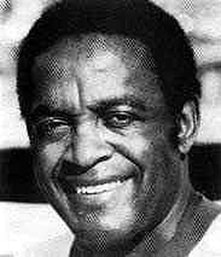
Irving Louis Burgie better known as Lord Burgess, is our songwriter in the Harlem Writers Guild. He was born in Brooklyn, New York. His mother was from Barbados and his father was from Virginia. He is best known for the song "Jamaica Farewell", for which he wrote the lyrics. It was recorded by Harry Belafonte, Jimmy Buffett, Carly Simon and others.
Burgie is the composer of 34 songs for Harry Belafonte, including eight of the eleven songs on the Belafonte album Calypso, which reached #1 on the Billboard charts. It was the first album of any kind to sell one million copies.[2] |
|
|
Dr. Maya AngelouA powerful, prolific and passionate member of the Harlem Writers Guild, Maya Angelou’s many expressions of art as protest through autobiographical fiction (she created a new genre), poetry, dance and music as well as writing and directing films makes her one of our most beloved, legendary authors. We celebrate her art with you through her poem, And Still I Rise.
|
Grace Edwards“Grace Edwards’s take on Harlem is authentic, and captures the essence of its pain, pride and joy in all of her literary works,” Diane Richards, executive director of the Harlem Writers Guild, wrote in an email. “In particular, her 1988 debut novel, ‘In the Shadow of the Peacock,’ reveals Grace’s breathtaking perspectives on the perils of being black and female in America while spotlighting turbulent social conditions of the 1940s that have become a plague on our nation today.” Click here to read the full article in the New York Times.
|
Harlem Inspired
Harlem is often thought of as the Mecca of the African diaspora - the holding place; the promise; the fulfillment of a place where people can go and feel at home. Throughout the world the name Harlem inspires people to hope for a better life, to dare to dream and to risk everything to be oneself.
Check out some videos that give you a taste of vintage Harlem born in a time when talented black people in America decided to create a culture of their own – a fusion of literature, music called Bebop and Jazz, and dance that became the artistic essence of Harlem – soulful, sassy and sublime.
Check out some videos that give you a taste of vintage Harlem born in a time when talented black people in America decided to create a culture of their own – a fusion of literature, music called Bebop and Jazz, and dance that became the artistic essence of Harlem – soulful, sassy and sublime.
Duke Ellington, “Take the A Train”Everybody in Harlem knew the majestic Duke, fine and dapper, and listening to the exhilarating sounds of his Orchestra uplifted the soul. The A train to Sugar Hill in Harlem - brings you right on uptown to 125th Street – the Heart of Harlem.
|
Billy Holiday & Louis Armstron
The blending of these two talents, Billie on vocals and Louis, nicknamed Satchmo, on Trumpet was nothing short of phenomenal. No one can scat like Satchmo and Billy is another story to herself. Let’s also not forget Armstrong took a publicized stand for desegregation in the Little Rock Crisis .
|
Cab Calloway – Minnie the MoocherHere is African American literary folklore in music at its best. Minnie the Moocher is a jazz classic recorded in 1931 by Cab Calloway and his Orchestra selling over a million copies. Hi De Hi De Hi De Hi….
|
Cotton Club Dancers Bust Some MovesThe Cotton Club was located first in the Harlem neighborhood on 142nd Street and Lenox Avenue from 1923 to 1935[1] and then for a brief period from 1936 to 1940 in the midtown Theater District. The club was a whites-only establishment even though it featured many of the most popular black entertainers of the era, including musicians Cab Calloway, Fletcher Henderson, Duke Ellington, Jimmie Lunceford, Louis Armstrong, Count Basie, Fats Waller, vocalists Adelaide Hall,[2][3] Ethel Waters, Avon Long, the Dandridge Sisters, the Will Vodery Choir, Berry Brothers, Nina Mae McKinney, Billie Holiday, Lena Horne, and dancers Bill Robinson, The Nicholas Brothers, Stepin Fetchit, and Earl Snakehips Tucker.
In its heyday, the Cotton Club served as a hip meeting spot, with regular "Celebrity Nights" on Sundays that featured guests such as Jimmy Durante, George Gershwin, Sophie Tucker, Paul Robeson, Al Jolson, Mae West, Richard Rodgers, Irving Berlin, Eddie Cantor, Fanny Brice, Langston Hughes, Judy Garland, playwright and director Moss Hart, and Mayor Jimmy Walker among others. |
Lena Horne – Stormy Weather (1943) When Lena Horne was 16, her mother pulled her out of school to audition for the dance chorus at the Cotton Club, the famous Harlem nightclub where the customers were white, the barely dressed dancers were light-skinned blacks and the proprietors were gangsters. A year after joining the Cotton Club chorus she made her Broadway debut, performing a voodoo dance in the short-lived show “Dance With Your Gods” in 1934. Looking back at the age of 80, Ms. Horne said: “My identity is very clear to me now. I am a black woman. I’m free. I no longer have to be a ‘credit.’ I don’t have to be a symbol to anybody; I don’t have to be a first to anybody. I don’t have to be an imitation of a white woman that Hollywood sort of hoped I’d become. I’m me, and I’m like nobody else.”
|
One O’Clock Jump – Count Basie (1943)Around 1920, Basie moved to Harlem, then a hotbed of jazz, where he lived down the block from the Alhambra Theater. In 1925, Basie gained his first steady job at Leroy's, a place known for its piano players and its "cutting contests." The place catered to "uptown celebrities," and typically the band winged every number without sheet music using "head arrangements."[16] He met Fats Waller, who was playing organ at the Lincoln Theater accompanying silent movies, and Waller taught him how to play that instrument. In 1935, William James “Count” Basie formed the Count Basie Orchestra and made the Woodside Hotel in Harlem their base in 1937. In 1946, The Basie's bought a whites-only home in the new neighborhood of Addisleigh Park on Adelaide Road and 175th Street, St. Albans. That move was activism in action. Here is one of Basie’s theme songs – One O’Clock Jump – a musical literary triumph from an African American composer.
|
Bessie SmithBessie Smith, nicknamed the Empress of the Blues, was the most popular female blues singer of the 1920’s and 1930’s. In 1929, Smith made her only film appearance, starring in a two-reeler, St. Louis Blues, based on W. C. Handy's song of the same name. In the film, directed by Dudley Murphy and shot in Astoria, Queens, she sings the title song accompanied by members of Fletcher Henderson's orchestra, the Hall Johnson Choir, the pianist James P. Johnson and a string section—a musical environment radically different from that of any of her recordings. The soul of Harlem can be heard in every note she sings.
|
The Harlem Renaissance – Black Cultural
|
|
The Harlem Renaissance, a cultural, social, and artistic explosion that took place in Harlem, New York, spanned the 1920s. During the time, it was known as the "New Negro Movement," named after the 1925 anthology by Alain Locke. The Movement also included the new African-American cultural expressions across the urban areas in the Northeast and Midwest United States affected by the Great Migration (African American),[1] of which Harlem was the largest. The Harlem Renaissance was considered to be a rebirth of African-American arts.[2] Though it was centered in the Harlem neighborhood of the borough of Manhattan in New York City, many francophone black writers from African and Caribbean colonies who lived in Paris were also influenced by the Harlem Renaissance.[3][4][5][6] The Harlem Renaissance is generally considered to have spanned from about 1918 until the mid-1930s.[7] Many of its ideas lived on much longer. The zenith of this "flowering of Negro literature", as James Weldon Johnson preferred to call the Harlem Renaissance, took place between 1924 (when Opportunity: A Journal of Negro Life hosted a party for black writers where many white publishers were in attendance) and 1929 (the year of the stock market crash and the beginning of the Great Depression).
|
Billie Holiday & Louis Armstrong – FareWell |
Billie Holiday – Strange Fruit |
Billie Holiday was an American jazz musician and singer-songwriter with a career spanning nearly thirty years. Nicknamed "Lady Day" by her friend and music partner Lester Young, Holiday had a seminal influence on jazz music and pop singing. After a turbulent childhood, Holiday began singing in nightclubs around Harlem. After being heard by producer John Hammond, who commended her voice, Holiday was signed to Brunswick Records in 1935. Collaborations with Teddy Wilson yielded the hit "What a Little Moonlight Can Do", which would later become a jazz standard. By the late 1940’s, however, Holiday was beset with legal troubles and drug abuse. After a short prison sentence, Holiday performed a sold-out concert at Carnegie Hall. However, due to her drug and alcohol problems, her reputation deteriorated. Though she was a successful concert performer throughout the 1950’s, Holiday's bad health, coupled with a string of abusive relationships and ongoing drug and alcohol abuse, caused her voice to wither. Her final recordings were met with mixed reactions , but were mild commercial successes. Her final album, Lady in Satin, was released in 1958. Holiday died of cirrhosis of the liver in 1959. A posthumous album, Last Recording, was released following her death.
Cab Calloway & the Nicholas Brothers - Jumpin Jive |
Duke Ellington
|
Louis Armstrong
|
